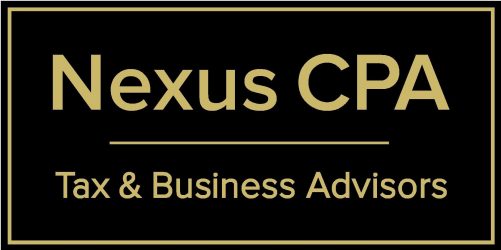5/17/19
Students receiving scholarships now may get taxed at highest rate of 35%
Under the new Tax Code, college kids receiving scholarships for room and board expenses will no longer be paying taxes at lower rates. Before the change scholarships received were subject to maximum tax rates applicable to their parents under the commonly know provision of ‘Kiddie Tax rate’ established primarily to address generational transfer of income from wealthy parents to children. Read full story in NY Times.
https://www.nytimes.com/2019/05/17/us/politics/college-scholarships-tax-increases.html
1/31/19
IRS Waives penalty for tax withholding and estimated tax payments fell short in 2018
IR-2019-03, January 16, 2019 — The Internal Revenue Service announced today that it is waiving the estimated tax penalty for many taxpayers whose 2018 federal income tax withholding and estimated tax payments fell short of their total tax liability for the year.
1/18/19
New Qualified Business Income Deductions – Final Regulations
IR-2019-04, January 18, 2019 — Today the Treasury Department and the Internal Revenue Service issued final regulations and three related pieces of guidance, implementing the new qualified business income (QBI) deduction (section 199A deduction).New Qualified Business Income Deductions – Final Regulations
Feb 20, 2018
Deduction of interest on a home equity loans (HELOC)
Debt secured by a first or second home and used to remodel the house has always been considered acquisition indebtedness, so the new law’s crackdown on home equity loans doesn’t apply. However, after 2017, you can no longer deduct interest on this debt used for other purposes, such as to buy a car or pay off credit card debt.
Changes to education tax breaks – 529 Plans
The 529 saving plan can now be used for Primary and Secondary Education, previously limited only to college education. After 2018, as much as $10,000, per student, per year, can be withdrawn, tax-free for tuition fees for both private and parochial elementary through high school education.
Budget deal extending tax breaks for 2017
Some highlights:
- The write-off for private mortgage insurance
- Above-the-line tuition deduction
- The $2-million exclusion of forgiven debt on a primary home.
Post a comment or give us a call with any questions
………………………………………………………………………….
January 05, 2018
The tax law changes signed into law on December 20, 2017 are one of the most significant tax legislation in over 30 years. The new law provides opportunities for tax planning to benefit from the various incentives and tax cuts for 2018 and beyond. Give us a call and set up a meeting to discuss how the new law may likely effect you.
Tax Cuts and Jobs Act of 2017
The law makes reductions to income tax rates for most individual tax brackets, and also reduces the income tax rate for corporations and eliminates the corporate alternative minimum tax (AMT). The Law provides a new tax deduction for owners of pass-through entities (S-Corp’s; LLC’s & Partnerships) based on an income criteria and significantly increases individual AMT and estate tax exemptions.
Here is a quick rundown of some of the key changes affecting individual and business taxpayers. Except where noted, these changes are effective January 1, 2018.
Key Changes Affecting Individuals
-
Drops of individual income tax rates ranging from 0 to 4 percentage points (depending on the bracket) to 10%, 12%, 22%, 24%, 32%, 35% and 37% — through 2025
-
Near doubling of the standard deduction to $24,000 (married couples filing jointly), $18,000 (heads of households), and $12,000 (singles and married couples filing separately) — through 2025
-
Elimination of personal exemptions — through 2025
-
Doubling of the child tax credit to $2,000 and other modifications intended to help more taxpayers benefit from the credit — through 2025
-
Elimination of the individual mandate under the Affordable Care Act requiring taxpayers not covered by a qualifying health plan to pay a penalty — effective for months beginning after December 31, 2018
-
Reduction of the adjusted gross income (AGI) threshold for the medical expense deduction to 7.5% for regular and AMT purposes — for 2017 and 2018
-
New $10,000 limit on the deduction for state and local taxes (on a combined basis for property and income taxes; $5,000 for separate filers) — through 2025
-
Reduction to the mortgage debt limit for the home mortgage interest deduction, to $750,000 ($375,000 for separate filers), with certain exceptions — through 2025
-
Elimination of the deduction for interest on home equity debt — through 2025
-
Elimination of the personal casualty and theft loss deduction (with an exception for federally declared disasters) — through 2025
-
Elimination of miscellaneous itemized deductions subject to the 2% floor (such as certain investment expenses, professional fees and un-reimbursed employee business expenses) — through 2025
-
Elimination of the AGI-based reduction of certain itemized deductions — through 2025
-
Elimination of the moving expense deduction (with an exception for members of the military in certain circumstances) — through 2025
-
Expansion of tax-free Section 529 plan distributions to include those used to pay qualifying elementary and secondary school expenses, up to $10,000 per student per tax year
-
AMT exemption increase, to $109,400 for joint filers, $70,300 for singles and heads of households, and$54,700 for separate filers — through 2025
-
Doubling of the gift and estate tax exemptions, to $10 million (expected to be $11.2 million for 2018 with inflation indexing) — through 2025
Key Changes Affecting Businesses
-
 Replacement of graduated corporate tax rates ranging from 15% to 35% with a flat corporate rate of 21%
-
Repeal of the 20% corporate AMT
-
New 20% qualified business income deduction for owners of flow-through entities (such as partnerships, limited liability companies and S corporations) and sole proprietorships — through 2025
-
Doubling of bonus depreciation to 100% and expansion of qualified assets to include used assets —effective for assets acquired and placed in service after September 27, 2017, and before January 1, 2023
-
Doubling of the Section 179 expensing limit to $1 million and an increase of the expensing phaseout threshold to $2.5 million
-
Other enhancements to depreciation-related deductions
-
New disallowance of deductions for net interest expense in excess of 30% of the business’s adjusted taxable income (exceptions apply)
-
New limits on net operating loss (NOL) deductions
-
Elimination of the Section 199 deduction, also commonly referred to as the domestic production activities deduction or manufacturers’ deduction — effective for tax years beginning after December 31, 2017, for non-corporate taxpayers and for tax years beginning after December 31, 2018, for C corporation taxpayers
-
New rule limiting like-kind exchanges to real property that is not held primarily for sale
-
New tax credit for employer-paid family and medical leave — through 2019
-
New limitations on excessive employee compensation
-
New limitations on deductions for employee fringe benefits, such as entertainment and, in certain circumstances, meals and transportation

